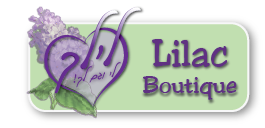Professional Development
Seeach Melamdim
Seeach Melamdim 6
In what has become an annual tradition, the yartzeit of Seeach Sod’s legendary founder Rabbi Dov Levy z”l is dedicated to gathering educational figures with the goal of promoting the concept of integration of the special-needs child in society.
Staff Seminar
With a constant eye on the future, CEO Rabbi Shimon Levy arranged a comprehensive two-day seminar for the administrative staff of Seeach Sod on May 8-9. The purpose of the seminar was to review and reflect upon the previous year's work plan and evaluate achievements, in order to implement an effective "work blueprint" for the new school year of 5774.
Choir Receives Keren Shalem Prize
In a moving ceremony on Monday December 17, members of the Pirchei Seeach Choir were awarded with the 2012 prize from the Shalem Foundation. As the choir sang a stirring rendition of "Tov Lehodos L'Hashem", the packed audience, comprised of members from all sectors, could not contain their enthusiasm. Some were moved to tears.
Self-Advocacy Exhibit
Between June 26 and July 2, over a thousand special ed. teachers, teachers in-training, principals, curriculum advisors, and g overnment representatives from across the country enjoyed a fascinating tour through Seeach Sod’s exhibition on “Self-Advocacy”.
overnment representatives from across the country enjoyed a fascinating tour through Seeach Sod’s exhibition on “Self-Advocacy”.
What is Self-advocacy? What is its significance in the field of special education? And what was Seeach Sod’s exhibit all about?
Self-advocacy refers to an individual’s ability to effectively convey and assert his interests, desires or needs as well as to maximize his inner potential and achieve goals. The ability to self-advocate is especially important for individuals with special needs, since their self-perception, level of communication, and general interaction with society are usually compromised. For the disabled individual, self-advocacy empowers him with the tools needed to speak up for himself and thus enhance his quality of life.
At the beginning of this school year, Seeach Sod’s senior educational staff introduced self- advocacy as the theme that would be the focus throughout the year in three of its special ed. branches: the early childhood division, the light disabilities division and the complex disabilities division.
The Self-Advocacy Project was further broken down into two main subcomponents: 1. Choices – allowing students to express his preferences and choices. 2. Self-Identification – teaching students their personal details, making them aware of their strengths and difficulties and and enhancing their self-image.
Throughout the year, the teachers (over 50!) worked on instilling various aspects of self-advocacy in their students, ranging in age from 1 to 18 and spanning a wide spectrum of functional levels. The teachers came up with incredibly creative methods to implement and reinforce self-advocacy in their classrooms. The success of the project was unprecedented, with the students (over 400!) meeting some or all of the goals that were set for them. The Self-Advocacy Project culminated last week in a beautiful exhibition that was open to educational figures from across Israel who came to learn about this subject and glean practical ideas on how to apply it in their own classrooms. Teachers, parents, principals, and representatives from the Education and Welfare Ministry all left the exhibition hall captivated by the stimulating and eye-opening tour.
Participating Branches in the Self-Advocacy Project

The teachers in the various branches in Seeach Sod really outdid themselves, showing so many creative ways, and on so many different levels, to instill and reinforce self-advocacy! We share just a sampling of a few of the dozens of projects that were displayed at the exhibit.

My ID Card
Teacher: Mrs. C. Steinberg
Students Aged: 5-7
Branch: Ganei Eshkol
Goal: Internalizing personal information
Each student created an ID card, containing his personal details, including food and hobby preferences.

That's Me!
Teacher: Mrs. S. Zachs
Students Aged: 8-10
Branch: Otzar Yerushalayim
Goal: Self-perception and recognition
Life-like models of each student was formed by tracing and cutting out their figures on Styrofoam and then dressing it up in his own clothing.

On the Right Track
Teacher: Mrs. C. Gibralter
Students Aged: 3-4
Branch: Ma’on Tzur
Goal: Setting goals, promoting sense of competence and self-esteem.
At the beginning of the school year, the teacher designated a goal for each student and photographed them in a pose that represented that goal. Their photos, embedded in a colorful train, were displayed in a prominent spot in their classroom, so the children could always see “themselves achieving their goal”. For example: the goal for one boy who was walking with a walker was that he would be able to walk only with a stick, so he was photographed holding a stick. (Incredibly, each one of these students reached his/her goal at the end of the year!)

My Neighborhood
Teacher: Mrs. A. Rosenzweig
Students Aged: 7-8
Branch: Ganei Eshkol
Goal: Internalizing personal and environmental information.
This class was taught all about their neighborhood and every few weeks, they visited the neighborhood of a different classmate. The class got to see the grocery store, shul, park etc. in that girl’s neighborhood.

What's Your Order?
Teacher: Mr. E. Tam, Mr. Golshevsky, Mr. Shechter
Students Aged: 17-21
Branch: Beit Metzudot
Goal: Developing personal choice, enhancing sense of capability and self-esteem.
This extraordinary project elicited amazement among the viewers. Once a week, the students in Beit Metzudot, most of who have very low communication levels (non-verbal) managed a cafeteria in Seeach Sod’s dining hall. The students took turns each week, with some being the “managers” and some the “customers.” The students themselves baked, prepared, and packaged the refreshments and then served their customers with aplomb and professionalism. How did these nonverbal boys give and take food orders? Each customer was given a Velcro board where he stuck a photo of himself and then below it, two cards with food items that he chose from a choice of four cards. (For example: a muffin and orange juice). Teachers reported that these students, who usually have severe behavioral issues, displayed dramatic improvement in their behavior when they were in the cafeteria, either serving or patronizing! This brilliant initiative gave low-functioning students a generous boost to their self-esteem, as they engaged in productive, stimulating and enjoyable work!

The Profession of my Choice
Teacher: R. Beckerman
Students Aged: 11-13
Branch: Otzar Yerushalayim
Goal: Personal details, environmental knowledge, goal-setting, personal choice and decision-making.
Each student chose a profession that he relates to and he got to learn all about it. The student was even treated to a special visit to someone involved in that profession (trips to fire station, carpentry shop, doctor’s office etc.) One sensational highlight was when Dovid Yonaton, a twelve-year old boy with a degenerative disease, who dreams of being a radio broadcaster, got to visit the Kol B’ramah Broadcasting Station, where his favorite singer sang a song on the air in his honor, while Dovid Yonaton pressed the buttons on the control panel!

It Happened to Me!
Teacher: Mr. E. Tam
Students Aged: 17-19
Branch: Beit Metzudot
Goal: Developing the ability to communicate personal experiences and stimulating discussion among classmates.
Non-verbal students were able to share experiences and incidents with the help of PCS boards, photographs, and prompting from their teacher.
 My Treasure Box
My Treasure Box
Teacher:Mrs. S. Kaufman
Students Aged: 2-3
Branch: Ma’on Tzur
Goal: Internalizing personal information and concept of ownership.
A special box adorned with a picture of a student was filled with some of that child’s personal possessions. Every few weeks, of course, the box “belonged” to a different child.
 Majority Wins!
Majority Wins!
Teacher: Mrs. S. Hirsh
Students Aged: 7-9
Branch: Ganei Eshkol
Goal: Developing personal choice and collective decision-making.
The girls were taught the concept of collective choices and majority votes. The teacher displayed two choices, in the form of photos (for example, what kind of nosh should we buy for Shabbos) and the girls’ names were recorded below the item they chose. The votes were tallied up in the end and majority won!

My Story
Teacher: Mrs. C. Berlin
Students Aged: 14-16
Branch: Ma’oz Yerushalayim
Goal: Promoting self-expression and
enhancing self-esteem.
Each student got to write her very own book, using illustrations, clip art, photos and her own narrration to convey a personal story.
Seeach Avos
A unique conference for parents of special-needs children took place on 13 Adar, 5771. Over the past few years, the yartzeit of Seeach Sod’s unforgettable founder Rabbi Dov Levy z”l, leading pioneer in the field of special education in the Chareidi world, has been earmarked as a day of enlightening seminars on the topic of special education in the religious world. This year, Seeach Sod announced that the gathering would be geared towards the parents of special needs children. Rabbi Shimon Levy, CEO of Seeach Sod, responded to the repeated requests coming in from fathers – and even mothers, who expressed a strong desire for a seminar that would broaden their knowledge and skills in dealing with their special children.







